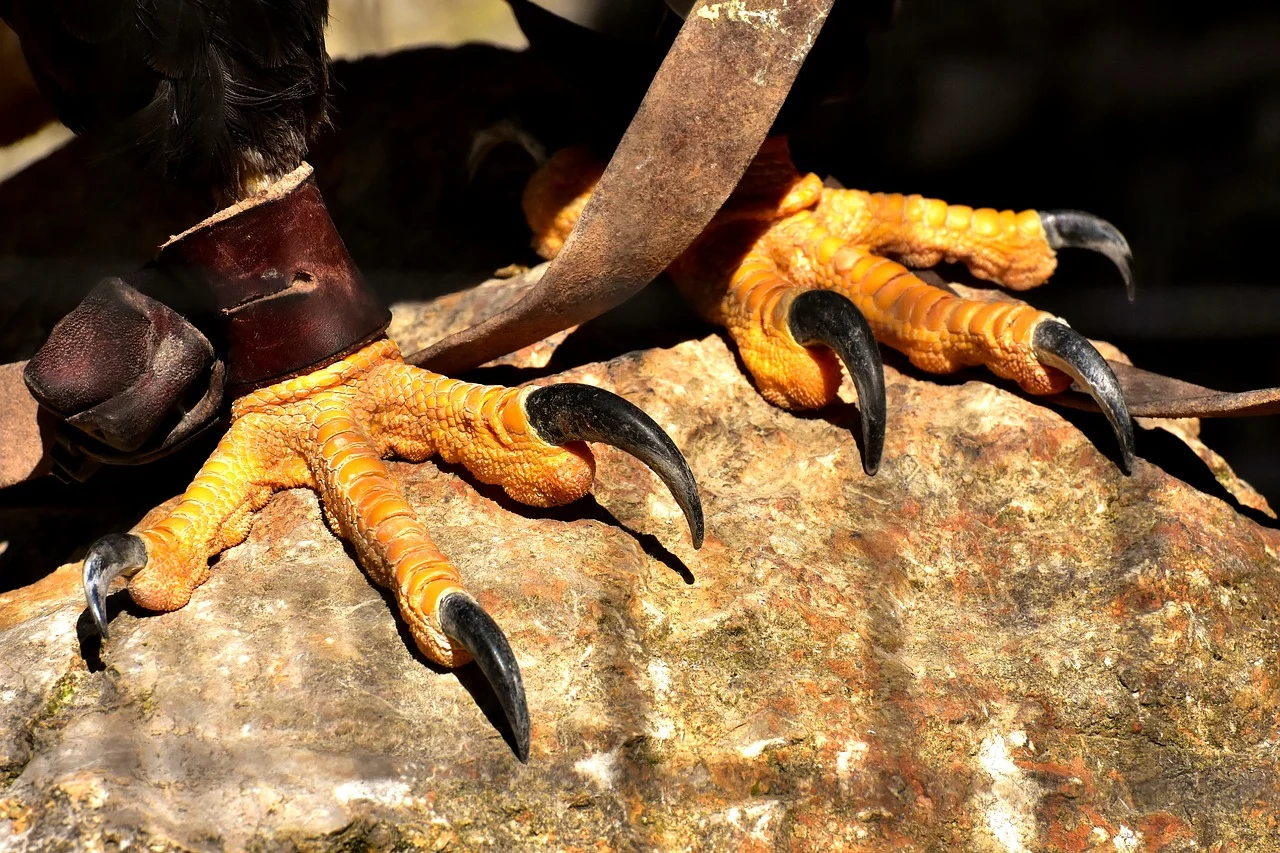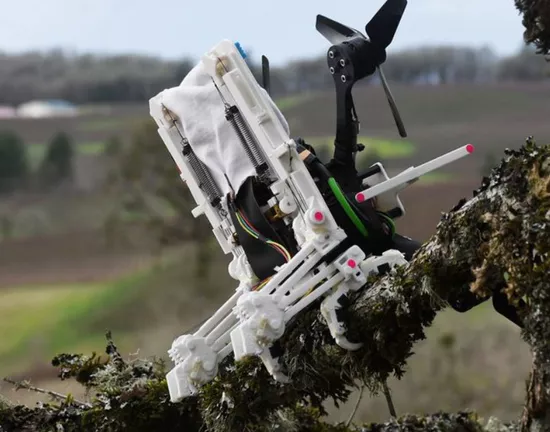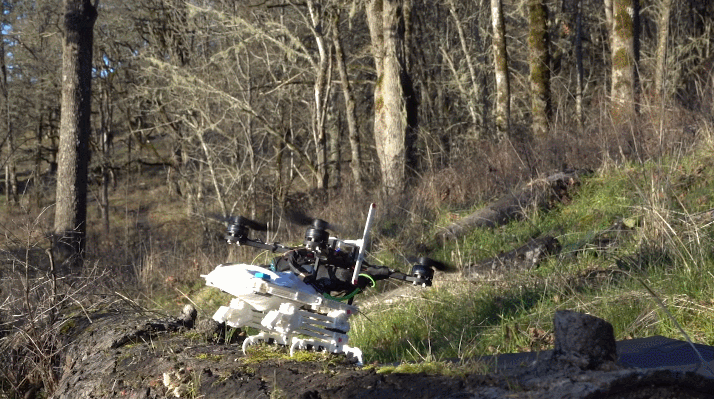If you are a park goer, you must have seen birds jumping happily on the branches. Have you ever noticed that it seems that no matter whether the branches are thick or thin, smooth or rough, even if they are covered with moss, birds can always treat them equally, take root on the branches, and even squat and take a nap is a piece of cake Careful scientists discovered this phenomenon very early and "learned from the birds". Finally, they successfully installed a pair of claws on the "bird" - UAV in the field of science and technology, and named this mechanical claw snag

Motion picture: snag can grasp objects and land like a bird (image source: https://www.science.org/doi/10.1126/scirobotics.abj7562)
Two scientists, engineer mark Cutkosky of Stanford University in the United States and David lentink of Groningen University in the Netherlands, inspired by birds, invented the mechanical claw snag mounted on UAV, which was on the cover of the famous scientific journal Science robotics.
At present, this kind of mechanical claw has been successfully carried on the UAV they have made, and has carried out multi-dimensional experiments and practical mission tests.
Why can birds master this skill? How do scientists learn skills from birds to add such reliable claws to UAVs?
Part.1
A pair of claws with magical structure and wonderful bones
There are many kinds of birds, and their ability to grasp branches is also different. Birds such as ostriches, flamingos, or ducks do not have the ability to fly long distances and perch in trees, and the grasping ability of claws is naturally relatively weak; Most other birds, needless to say, stand firmly on the branches and sleep easily on them.
In fact, the greatest contribution of birds to this ability is its special claw structure. From epidermis to muscles, ligaments to bones, thousands of years of evolution have made every detail of bird claws tailor-made for the little action of "grasping".

Let's start with the skin. I believe everyone has eaten a dish - "tiger skin and chicken feet". When we carefully observe it, we will find that there are small bumps on the surface of chicken feet, and the bumps in contact with the ground are more detailed. Most other bird's claws also have this scaly horny hard skin structure, which can maximize the contact area and friction between bird claws and the ground, so that birds can grasp steadily even on smooth wires.
In addition, this layer of skin is hard and has no pain nerves, which ensures that birds can fall down and stop without thinking when they see branches or rough ground, without considering being cut or scratched.

Not only is the skin of the claws exquisite, but the muscles, ligaments and bones of the bird are more like an exquisite machine. Most birds have three toe claws in the front and one in the back. These toe claws are thin and long, suitable for surrounding and clinging to branches of different thicknesses. When the bird claws grasp the branch, the bird will quickly squat down the back of the body, bend the legs, and the flexor tendon will automatically tighten, driving the claws to fasten the branch. The tiny action of "sitting down" seems to drive a series of organs at one go. At this time, the clasped claw is like "locked", which will not be easily loosened even after taking a nap.
Part.2
For sleeping and hunting, these are a pair of busy claws
Seeing here, do you think the bird's "locked" claws must be full of power? Surprisingly, unlike the tense muscles when human hands grasp objects, the muscles of birds are relaxed when their claws are fastened, that is, birds need to exert force when falling and taking off, but it doesn't take much effort to stop on the branches and grasp the trunk.
Because of this, the birds can easily stand on the branches and take a nap. In addition, birds usually sleep less. They can even make half of their brains sleep and the other half stay awake. Therefore, when taking a nap in a tree, birds can still adjust all parts of their body and maintain balance.
Such exquisite, flexible, strong and powerful claws are also sharp tools for many birds to hunt. The main weapons of carnivorous birds are their mouths and claws, and eagles are the best at using these two weapons. The gripping power of eagle claw is more than ten times that of human. It can easily pierce the skull of large animals. It is a solid weapon. It is precisely because bird claws are so precise and practical that scientists get a lot of inspiration when creating inventions.
Part.3
Mechanical claw snag: another achievement of human worship to birds
In the early period, human beings learned the principle of bird flight, improved and invented aircraft. Later, although the spiral wing helicopter and small UAV are no longer similar to the structure of birds, people can still get a lot of inspiration from birds and then add them to UAVs. Today's mechanical claw snag is another achievement of human worship to birds.

Snag is made of 3D printing technology, which is light and durable. The overall structure is modeled after the eagle claw, including the toe claw epidermis, bones and key linkage tendons.
Snag surface has toe pads and claw tips to increase friction to ensure sufficient friction with the contact surface. The transmission structure composed of gear and connecting rod, which is similar to Eagle Claw bone tendon, ensures the firmness of grip and low energy consumption. Similar to the muscle characteristics of birds, snag is also in a natural state of low energy consumption when maintaining static grip.
The design, which imitates the eagle claw, has been a great success. Snag can grasp different object surfaces for a long time, including branches enough to carry the weight of UAV and uneven ground. It can also grasp and take objects according to instructions like a real eagle claw.
Part.4
With snag, what can we do?
Like excellent bird claws, the main task of this mechanical claw is to stop and grab, and these two functions are of extraordinary significance to the actual operation of UAV.
First, docking is an important measure to save power for UAVs. Small partners who have played with UAVs should have a deep understanding that endurance is one of the key indicators to test the performance of UAVs. However, in wildlife monitoring, situation survey and other tasks, UAVs need to hover for a long time, so that the existing power supply can not support the completion of the task. If we can rely on snag to dock, the power consumption will be less than 1 / 10 of that of hovering, which greatly alleviates the lack of endurance capacity of UAV.
Secondly, the ability to grab and transport goods is of great significance to the universality of UAV. In some environments, such as complex and rugged areas that are difficult to reach by manpower or areas with high accident risk, such as mines filled with toxic gases and swamps where dangerous organisms are hidden, UAVs can complete the tasks of rapid detection, sampling and short-distance transportation.

Dynamic picture: snag can take off and land smoothly (picture source: https://www.science.org/doi/10.1126/scirobotics.abj7562)
Although snag still has some problems, for example, the grasping operation needs manual manipulation and can not automatically detect the suitable surface or branches for grasping, it still brings us a broad imagination space.
In the future, snag may become the standard configuration of UAVs in some complex scenes, realize the long-time operation and flexible sample collection of UAVs, and may also shine in other types of robots and even Mars probes.
Snag is another exquisite achievement made by human beings in imitating birds and another progress of bionic robots. In fact, the essence of science is to make progress in such continuous exploration, inspiration and innovation, learn and master laws from nature, and turn them into the power of human progress. Pay attention to your side and focus on migration. Maybe the next popular discovery is hidden in the grove downstairs.
reference:
[1] Roderick, W。 R。 T。, et al。(2021)。 “Bird-inspired dynamic grasping and perching in arborealenvironments。” Science Robotics 6(61): eabj7562。。
Produced by: Popular Science China
Author: Zhiyao popular science
Supervised by: Computer Network Information Center, Chinese Academy of Sciences
Source: China Science Expo